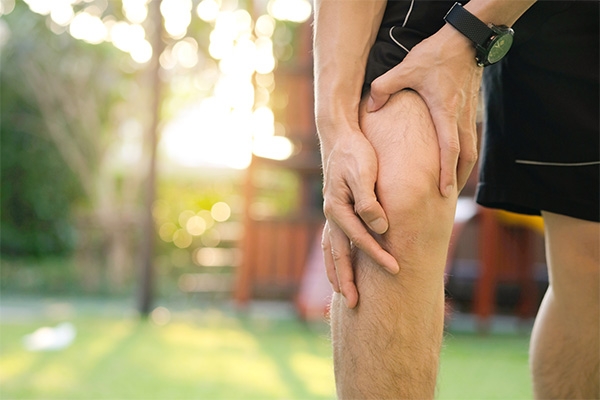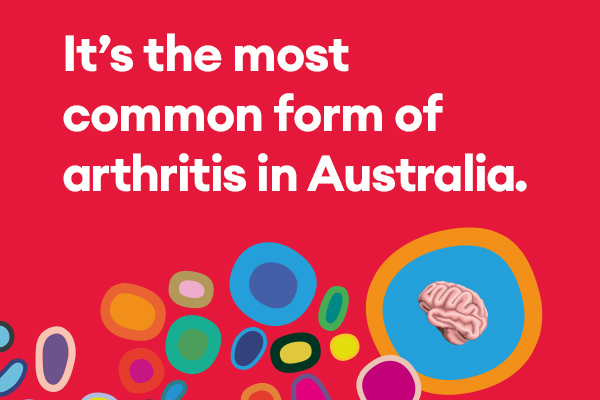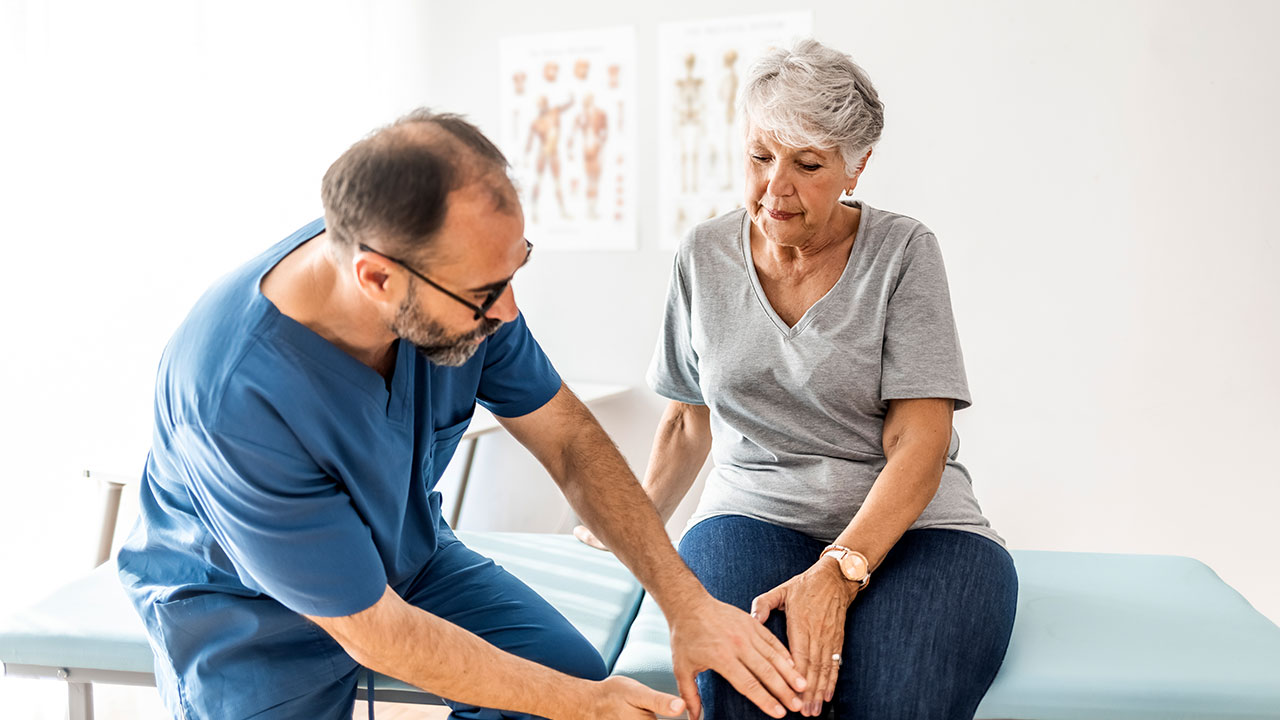Written by Medibank
June 2022
Osteoarthritis can have a debilitating impact on a person’s life. According to the Australian Institute of Health and Welfare, those living with osteoarthritis are much more likely to report poor health, high levels of psychological distress and severe pain than those who aren’t living with the condition.
So, what is osteoarthritis and how do you manage or treat the symptoms? Here’s your guide to understanding the condition.

What is osteoarthritis?
Osteoarthritis is a condition that affects the joints: the bones, cartilage, ligaments and muscles. Knee and hip joints are among the most commonly affected.
Normally, healthy cartilage allows bones to glide over one another. However, in people with osteoarthritis the cartilage covering the joints wears away causing the bones to rub together creating pain, swelling, and stiffness.
What are the symptoms of osteoarthritis?
Common symptoms of osteoarthritis are:
- pain, stiffness and limited joint movement
- limited range of motion or stiffness that goes away after movement
- clicking or cracking sound when a joint bends
- mild swelling around a joint
- pain that is worse after activity or toward the end of the day.
What causes osteoarthritis?
There’s no specific cause of osteoarthritis. However, there are several factors that can contribute to its onset and progression:
- Being overweight or obese.
- Genetics.
- Joint misalignment, injury or trauma (such as dislocation or fracture).
- Repetitive joint-loading tasks (for example, kneeling, squatting and heavy lifting).
Can osteoarthritis be reversed?
While there is no cure for osteoarthritis there’s a lot you can do to take control of your condition to slow its progression, reduce your pain, and improve your function.
Many people mistakenly think that their symptoms will continue to get worse regardless of what they do. But in fact, osteoarthritis symptoms can be effectively managed by doing things like strengthening exercises, increasing physical activity, and losing weight.
How do you manage osteoarthritis pain?
Regular exercise is one of the best ways to manage your osteoarthritis symptoms, improve your mood and your overall health. It can help reduce some of the symptoms (e.g. pain, stiffness) caused by your condition and improve your joint mobility and strength.
Therapists can assist by providing advice on ways to use heat therapy and motion and flexibility exercises.
In addition, using medicines such as paracetamol or non-steroidal anti-inflammatory drugs (NSAIDs) may help manage the pain, though these medications are recommended only in low doses and for a short period under the guidance of a treating medical practitioner to gauge their effectiveness. Long term continuous use of paracetamol or NSAIDs isn’t recommended due to potential side effects.
What is the best exercise for osteoarthritis?
If you have knee or hip pain from osteoarthritis, the best exercises are:
- walking
- muscle strengthening exercises
- Tai Chi
- stationary cycling
- Hatha yoga
- aquatic exercise/hydrotherapy.
Plus, slow, gentle stretching of joints may improve flexibility, lessen stiffness and reduce pain.
What is the link between osteoarthritis and weight loss?
Excess weight adds additional stress to weight-bearing joints, such as the hips, knees, feet and back. Even a small amount of weight loss is beneficial and can help reduce pain. That’s why losing weight through regular exercise and a healthy diet is effective for managing osteoarthritis symptoms.
If you need to lose weight, speak to your GP about effective and supportive weight loss programs that are available to help you. If you have knee pain from osteoarthritis, the Better Knee, Better Me program can help eligible members achieve a healthy weight and reduce the chances of requiring total knee replacement surgery.

Better Knee, Better Me
This 12-month program combines personalised plans for exercise, weight loss and pain management that aims to help eligible members better manage painful knee osteoarthritis and help reduce the impact it has on their quality of life. Clinical and product eligibility criteria apply.
When do you need knee or hip replacement surgery for osteoarthritis?
Knee or hip surgery should only be recommended to repair or replace severely damaged joints if your symptoms can no longer be controlled with other therapies.
It’s important to note that treatment varies depending on which joint is affected. Talk to your GP to find the right plan for you.
If you have knee pain, the Better Knee, Better Me decision aid tool may help you determine if you should consider surgery. If surgery is required, Medibank members may be eligible for our No Gap Joint Replacement Program.

Read more about osteoarthritis
Looking for something else?
Visit Joint health for more information.
Things you need to know
While we hope you find this information helpful, please note that it is general in nature. It is not health advice, and is not tailored to meet your individual health needs. You should always consult a trusted health professional before making decisions about your health care. While we have prepared the information carefully, we can’t guarantee that it is accurate, complete or up-to-date. And while we may mention goods or services provided by others, we aren’t specifically endorsing them and can’t accept responsibility for them. For these reasons we are unable to accept responsibility for any loss that may be sustained from acting on this information (subject to applicable consumer guarantees).




